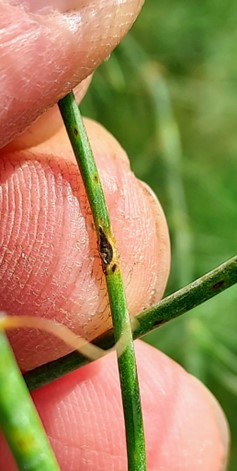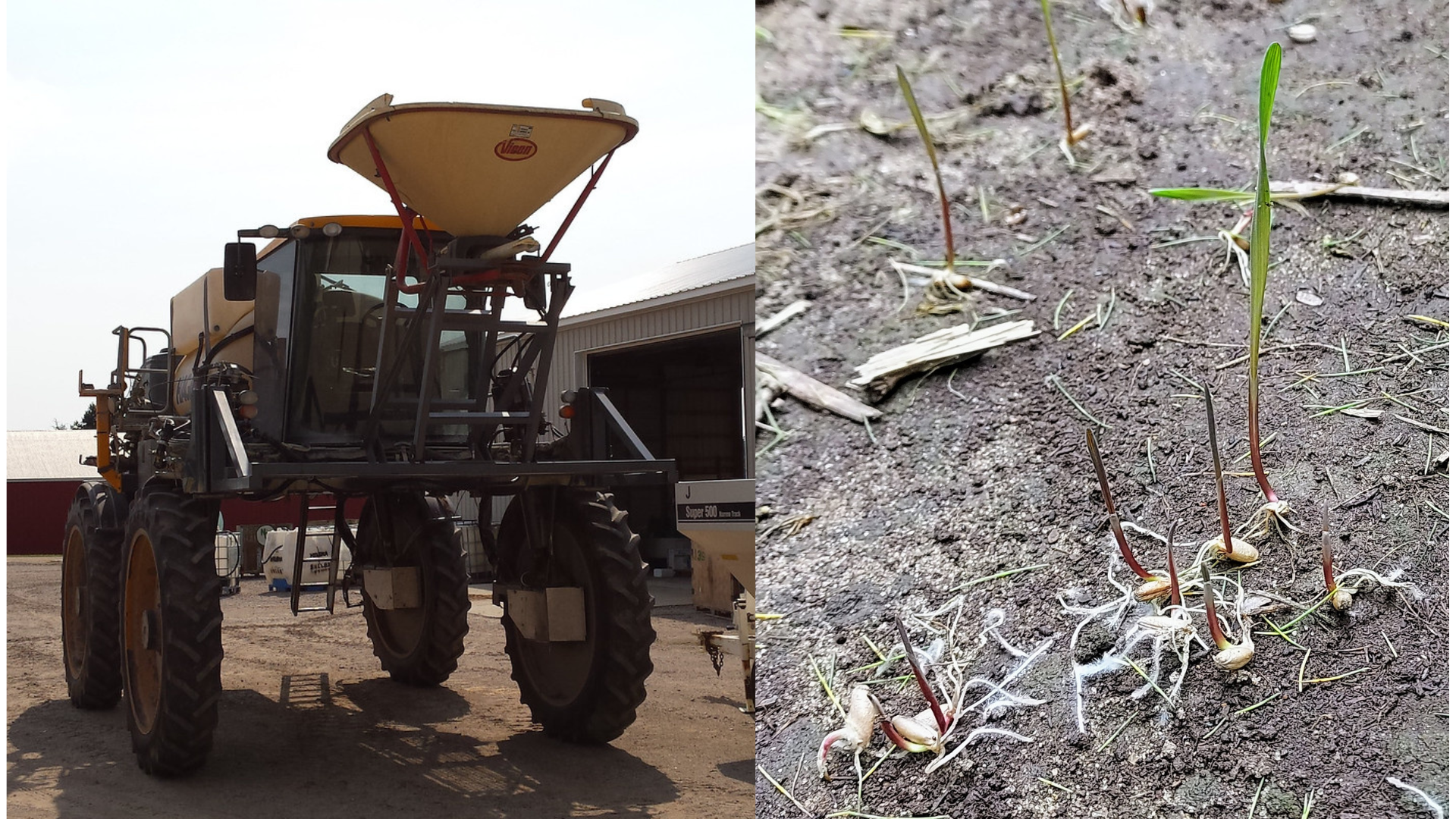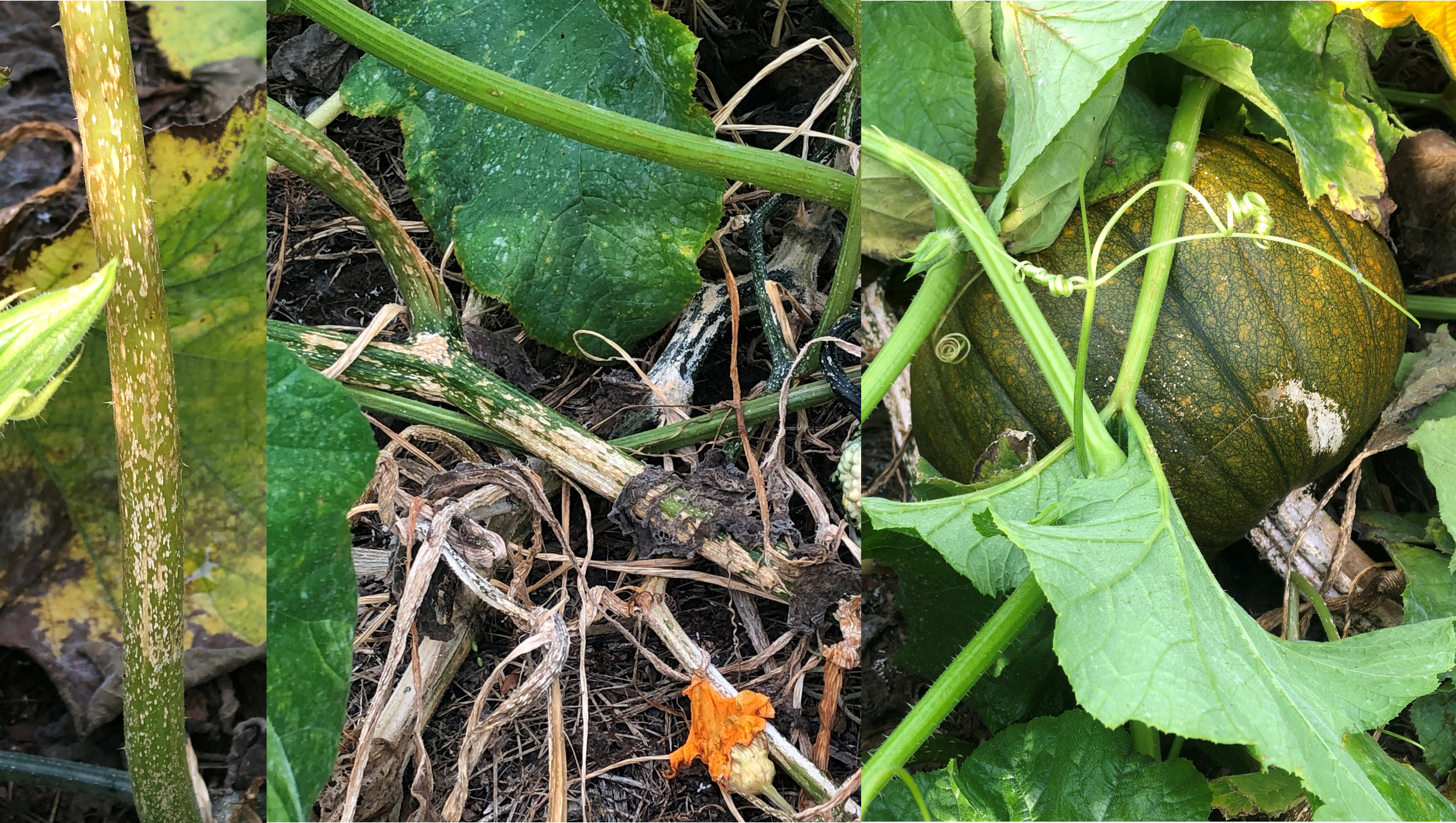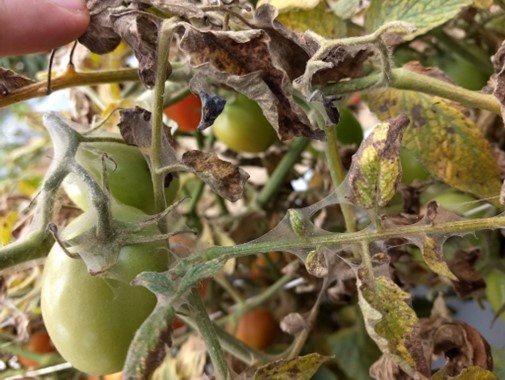Michigan vegetable crop report – August 31, 2022
With classes starting up again and many of our vegetable specialists involved with that, this is the last big weekly report of the season.
Weather
Watch Jeff Andresen’s weather update here.
The forecast calls for:
- Sunny and dry Wednesday and Thursday.
- Increasing clouds Friday with scattered showers possible northwest by late in the day continuing overnight. Mostly fair, warm and dry elsewhere.
- Showers and thundershowers likely north, scattered showers possible south Saturday. Best chances for rainfall, highest totals north.
- Mostly fair, dry and cooler Sunday into early next week.
- Daytime temperatures warming from the upper 70s to low 80s Wednesday to the mid- to upper 80s Friday, cooling back to the 70s to low 80s early next week. Lows generally from the mid-50s north to low 60s S.
- Medium range guidance generally calls for warmer and drier than normal weather into mid-SEP.
Changes for soil sample submissions
Michigan State University has provided soil chemical analyses and interpretation since the 1920s. This has been a valuable service for the Michigan agricultural community, homeowners and MSU researchers.
Unfortunately, due to declining soil test samples over time and the availability of similar services from commercial labs, it has been decided to close the MSU Soil and Plant Nutrient Lab (SPNL), also known as the Soil Testing Lab, at the end of 2022. To assure that all submitted samples can be processed, SPNL will continue to accept soil samples for analysis until Nov. 18, 2022.
MSU personnel are working on alternative options for Michigan residents to use for soil testing and can also assist in directing people to alternative soil testing laboratories to complete their soil testing needs.
MSU is committed to providing convenient and accurate interpretation of soil test data and research-based fertilizer recommendations for all Michigan crops, as a service to our stakeholders. MSU is committed to assisting Michigan residents in interpreting the results from soil tests and helping individuals determine what fertilizer and soil amendments are needed for their soils. We will keep you informed as we update and expand our offering of tools for determining MSU fertilizer and soil amendment recommendations based on soil analysis data.
Spotted lanternfly
Anything to worry about? They could be a casual nibbler on vegetables, but it prefers tree of heaven. They are not resistant to insecticides and several neonicotinoid options could be used as long as the crop is on the label, but imidacloprid is the weapon of choice. Work may be underway to increase seasonal use rates for certain crops if current label rates are ineffective. Visit MSU Extension’s Spotted Lanternfly website for more information.
Getting up to speed on Gypsum
Gypsum is a common soil amendment, but how much do you know about it? Below are some key points and additional resources to help you make good decisions.
- What is gypsum? In a nutshell, calcium sulfate, containing approximately 22% calcium (Ca) and 18% sulfur (S). It comes in many forms, from both mined and industrial byproduct sources. Pelletized options can be spread at low rates and blended with fertilizer. Ground gypsum is applied at higher rates (greater than about 500-1,000 pounds per acre) using a lime spreader.
- Gypsum does not appreciably change soil pH. As opposed to lime, gypsum can be a source of Ca when soil pH is already on target or too high.
- Gypsum is a source of calcium. A half ton per acre application of gypsum supplies approximately 220 pounds per acre Ca. However, keep in mind that Ca levels in most Michigan soils are generally adequate for crop production, with deficiencies more likely to occur on sandy soils when soil test Ca levels are below 300 ppm.
- Gypsum is a source of sulfur. With decreases in industrial S falling from the sky, crop response to sulfur fertilization has increased, particularly on sandier soils. However, recommended S fertilizer rates for most vegetables are in the range of 20-40 pounds S per acre. A half ton of ground gypsum supplies about 180 pounds of S, which is more than crops require, and likely to be lost via leaching on sandy soils. You may consider lower rates of pelletized gypsum if sulfur fertility is your main goal.
- Gypsum is “intermediately” soluble. Gypsum is more soluble than lime, but less soluble than many chemical fertilizer options for Ca and S (i.e., calcium nitrate or ammonium sulfate), with potential advantages in both cases.
- Gypsum can act as a “soil conditioner” by promoting flocculation of clay minerals, with the potential to reduce compaction and surface crusting and improve water infiltration and root growth. These effects are most prominent for sodic (high sodium) soils, which are not common in Michigan. While this is the most often cited justification for gypsum applications, a key term in the above sentence is clay. Potential physical benefits are much less likely to be realized on sandier soils.
- Risks of high rates on sandy soils. Sandy soils with low cation exchange capacity can only hold so many nutrients… what doesn’t “stick” can be leached. High rates of Ca applied with gypsum can substitute for other positively charged nutrients on the exchange capacity, especially potassium (K) and magnesium (Mg), promoting loss. If these nutrients are already low, high rates of gypsum may induce deficiencies.
- Gypsum can reduce phosphorus (P) losses from high soil test P or manure-amended fields by promoting formation of insoluble Ca-P precipitates. This may have water quality benefits in sensitive watersheds.
For more information, here’s a resource for further reading:
Crop updates
Asparagus
Between 9-11 Disease Severity Values (DSVs) accumulated at three sensors MSU Extension has in asparagus. A fungicide application would have been due Tuesday if nothing had been applied since the week of Aug. 15. Purple spot symptoms are becoming more noticeable as time passes, with unprotected fern dropping cladophylls.
It will be worth continuing to keep an eye on Disease Severity Values in coming weeks to determine if an additional fungicide cover is worthwhile. It seems like the last few years, September has become an extra month of summer. Don’t forget asparagus doesn’t finish moving nutrients from the fern to the crown until October. So, if the DSVs keep coming, it could be worth protecting fern into September.
Rust teleospore lesions were visible in at least one field early this week. These are black and tend to occur as weather gets cooler in fall. They kick off the overwintering stage of rust. It is not uncommon to see the orange uredospore lesions along with the black ones.

West central growers have been busy spreading rye cover crop seed over the top of fern. Recent rains were germinating the rye nicely. Rye cover crops keep sand from blowing in spring, minimizing injury to spears. They also hold back asparagus emergence by a few days. This article from Norm Myers details some of this.

A species of leafrolling caterpillar is not uncommon to find in asparagus in summer. It was active in some sites this week. It seems to always be around, but never causes major damage. This is just an “in case you see it” note.
.png?language_id=1)
Cole crops and leafy greens
Leafy green, herb and lettuce harvests were under stress from heat, and continuous supplies on some farms were becoming difficult to maintain. But regular harvests are picking up again, and soon shoulder-season greens will be coming back into the rotation. Planting date is important for mid-winter production of leafy greens in unheated or minimally-heated high tunnels. For cool-season greens like spinach and arugula, that time is coming near. Planting between September 20 and October 5 is a reasonable goal to reach marketable plant size for full-leaf greens while passive heat and light can still be collected from the sun. After about November 1, plants stop receiving enough light in a day to grow much, and cold temperatures hold the produce for you like a living refrigerator through the end of January. Harvests can be made off of this on a regular basis in winter. Light becomes more available in February and then plants start growing again and go straight to seed since most are biennials or winter annuals triggered to flower after accruing a critical number of chill hours.
Our weed scientist Sushila Chaudhari would like to hear from you! She has a survey to assess needs for novel non-chemical weed management technologies in cole and leafy green crops. This questionnaire is part of a USDA Specialty Crop Research Initiative proposal (SC-2021-07806 Developing a National Team to Optimize Non-Herbicide Weed Management Techniques in Cole and Leafy Green Crops) to identify grower interest in emerging technology for weed management. This includes vision-guided sprayers/thinners, steam weeding, and precision mechanical, laser, and electric weeders. It may also include drone-based activities such as imaging, mapping, and pesticide application. Specifically, the team of weed scientists from Clemson, UC Davis, Florida, Rutgers, Cornell, Michigan State, and Arkansas would like to know what tools and services are/would be valuable to you and what barriers are in place that would prevent you from adopting specific technologies.
Cucurbits/Pickles
Pumpkin crops are sizing up. The melon supply is still strong but the starting of the school year typically spells a slow down in the sweet summer indulgences. One cantaloupe variety at the SW Michigan Research and Extension Center apparently felt that fall was coming last week, and did not develop the cracked netted skin. Pickle, cucumber, and summer squash harvests from second plantings are nearing harvest on some farms.
Plectosporium blight is a disease in pumpkins that appears around the same time as powdery mildew on some farms. It is an aggressive defoliator, plus it moves to the fruit. I see it worse in fields that haven't been rotated yearly. Orchards and agritourism farms that reserve the same pumpkin patch by the parking lot year after year are good places to find this disease.
Another time I saw a bad case of Plectosporium was a pumpkin grower who leased most of their ground to a field cropper and was leaving themselves with a strangely shaped piece that was inconvenient for their renter. So, again, they used the same patch for years and the disease built up to severe levels. Fungicides in the Midwest Vegetable Guide can be used to slow it down, and it is likely that routine powdery mildew sprays also contribute to its control.

Fruiting vegetables
Harvest windows were getting longer with cooler nights over the last week, but are picking up again. Canning tomatoes are selling well. Blossom end rot has evened out after two or three pickings, but other issues have crept in with the picking activity in the crop. Spider mites moved into some crops, and bacterial spot, speck, and canker can be found in fields with a history of tomato production.

Both spider mites and bacterial diseases are difficult pests to make course corrections with. Scouting helps with mite populations. They often flare up when a broad-spectrum insecticide is used to manage other pests. Mites are managed better by special acaricides, some of which are found in the Midwest Vegetable Guide.
Bacterial spot, speck, and canker are very frustrating diseases. Spot and speck symptoms are somewhat similar with high densities of brown spots backed by yellowing tissue on leaves coalescing into large brown dead tissue, sometimes forming v-shaped lesions on leaves. Whole leaves will brown up, and sometimes the dark brown spots and specks will appear on fruit too. Canker symptoms include firing of the leaf edges; this is basically a blackening around the edges. A telltale symptom is raised light brown cankers on green fruit, though this symptom is not always present. It can also cause spotting on stems and petioles.
.png?language_id=1)
Fruit shape is more normal than it was over the last few weeks, but zippering, yellow shoulders disorder, and gray wall are all appearing in tomatoes.
.png?language_id=1)
Zippering is caused by cool temperatures (below 60 F) just after pollination. Smaller fruit being harvested now, like Romas, were flowering at the end of July and the Benton Harbor Enviroweather station records correlate with this observation, tracking lows of 55 to 58 F on Aug. 25, 28 and 29.
Gray wall tomatoes often look perfect on the outside, while yellow shouldered tomatoes present with yellow or green hardened areas on the outside around the stem. Both disorders have tough white tissue on the inside of the fruit and lack flavor. The orange and yellow tomatoes I sampled this week are either less prone to the issue or disguise it well with their color.
I wish I could tell you what to do about it. But, both well-conducted research and farming anecdotes over many years point in every direction. Wide swinging temperatures, humidity, and light levels during fruit development, and the improper balance of potassium, magnesium, calcium, and nitrogen are common themes. Variety selection also seems to play a role, and this Purdue article summarizes a full research report from Delaware on the subject. I will try to make similar measurements in next year’s Southwest Michigan Research and Extension Center tomato trial. The nutrient factors are easier to experiment with and control than the weather, and this Purdue article makes some recommendations focusing on potassium. But growers doing very different things intentionally, and growers doing nothing special all see success sometimes. Reminds me of fishing.
Sweet corn
The sweet corn crop this year is excellent.
There was a jump in earworm trap catches at least some locations over the weekend. Roughly 8 moths per night were captured at an Oceana County trap (56 in a week) and scouts reported higher catches. When captures get high-not uncommon for this time of year-it can be important to tighten spray intervals (every three to five days depending on pressure in your area and buyer tolerance). Pyrethroids can be helpful at lower trap captures, but where they are higher, products containing the active ingredients chlorantraniliprole or spinetoram are helpful. There are both one-active versions of these (e.g., Coragen and Vantacor for chlorantraniliprole, Radiant for spinetoram) as well as pre-mixes with pyrethroids (e.g., Besiege, Elevest) or other insecticides (e.g., Intrepid Edge). Tightening spray intervals is also important as captures increase.
.jpg?language_id=1)
Events
- Sept. 8: Field Day at the Northwest Michigan Horticulture Research Center. The center is located at 6686 S. Center Highway in Traverse City and will highlight Michigan fruit advancements.
- Sept. 8: Oceana Research Tour featuring asparagus and carrots. Call 231-873-2129 for more details.
- Sept. 14: Mechanical Weed Control Field Day at the Southwest Michigan Research and Extension Center. The center is located at 1791 Hillandale Road in Benton Harbor. See https://thelandconnection.org/event/2022-mmwcfd/
- Tell Crosshatch and their partners how the next Northern Michigan Small Farm Conference should look. Please complete this 5-minute survey to help shape the next conference.
This work is supported by the Crop Protection and Pest Management Program [grant no 2021-70006-35450] from the USDA National Institute of Food and Agriculture.



 Print
Print Email
Email

